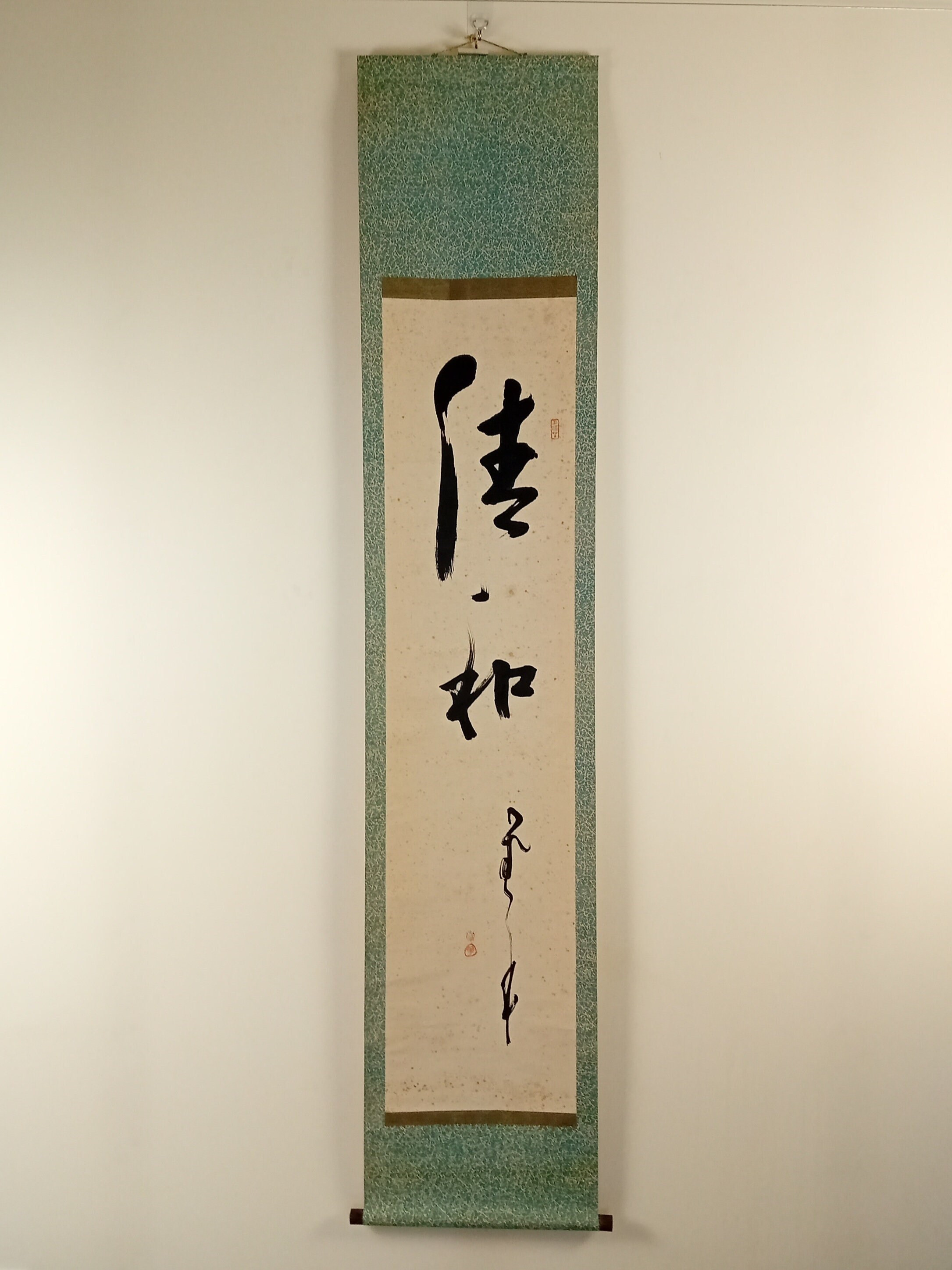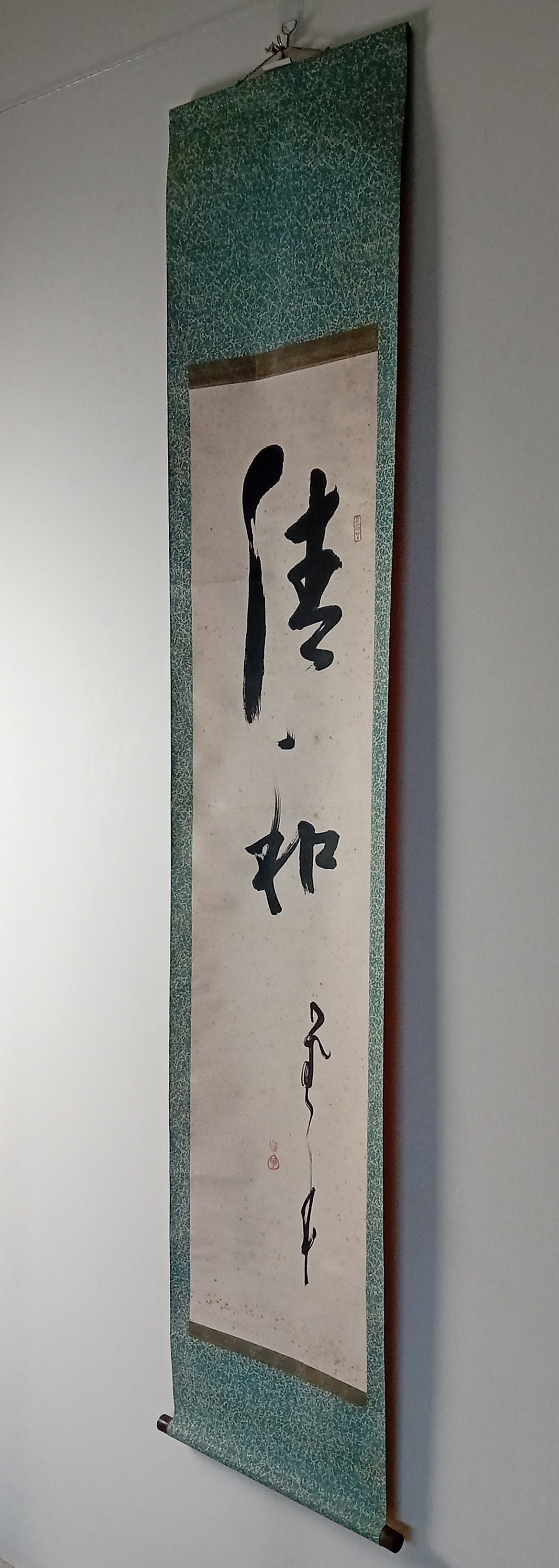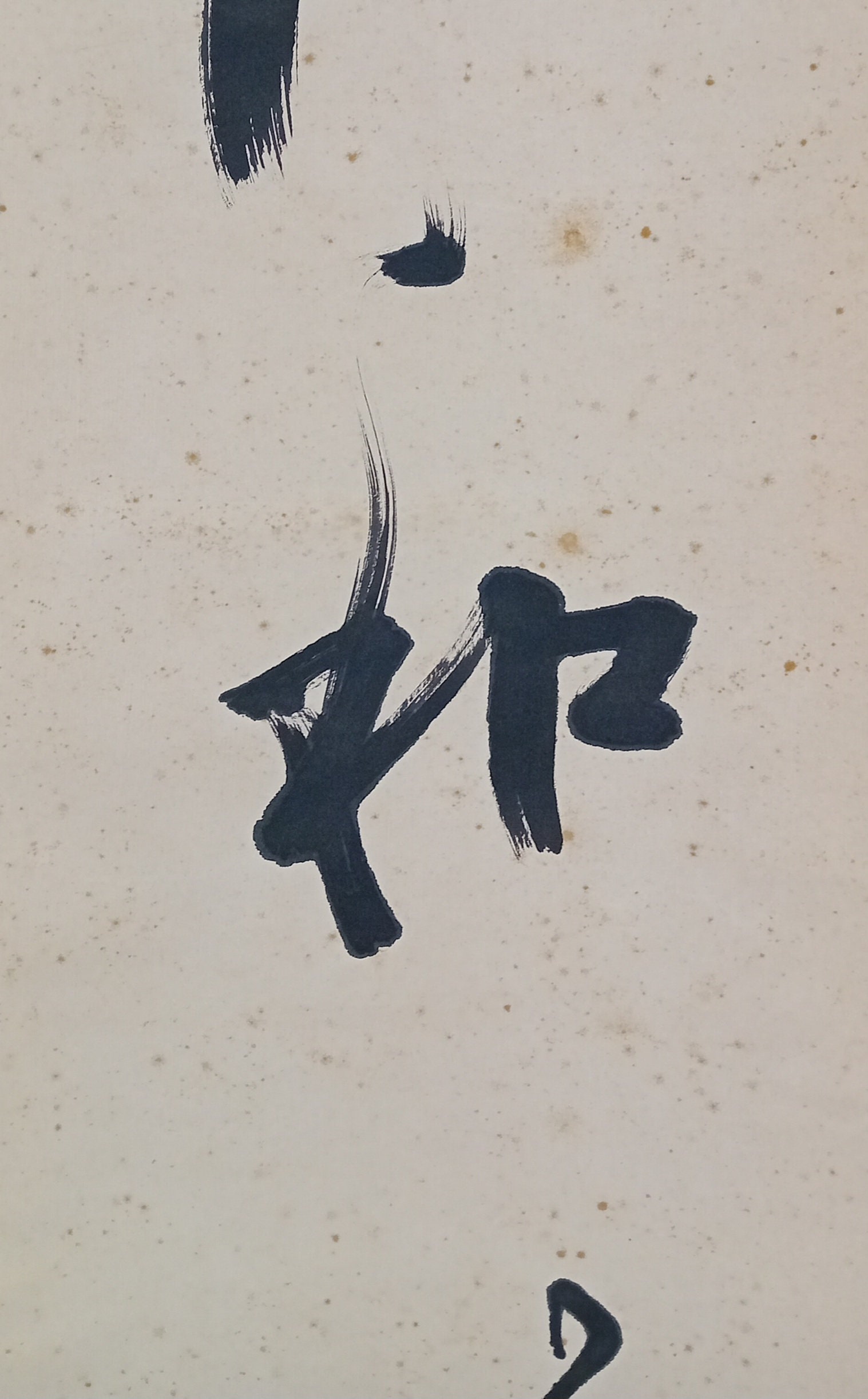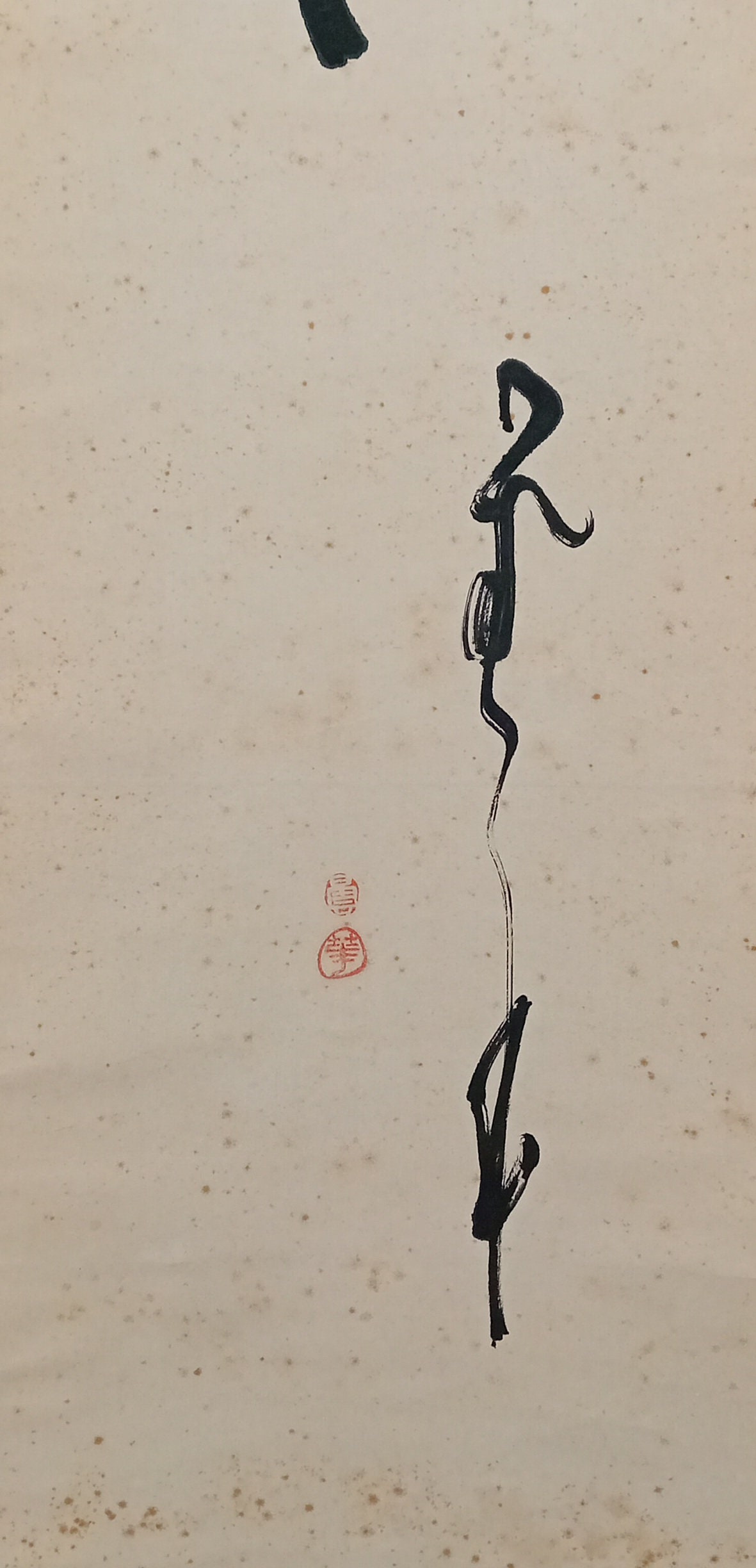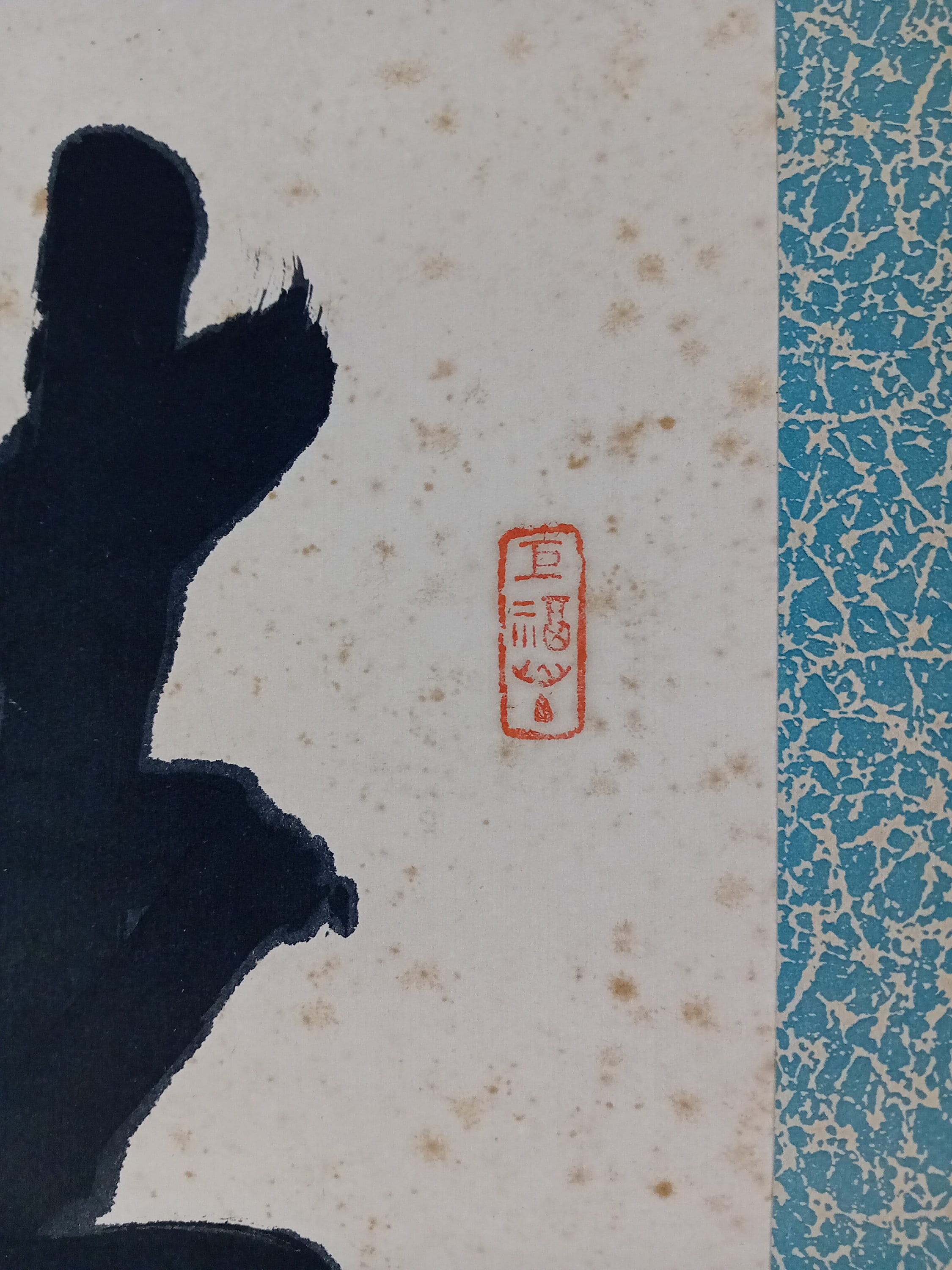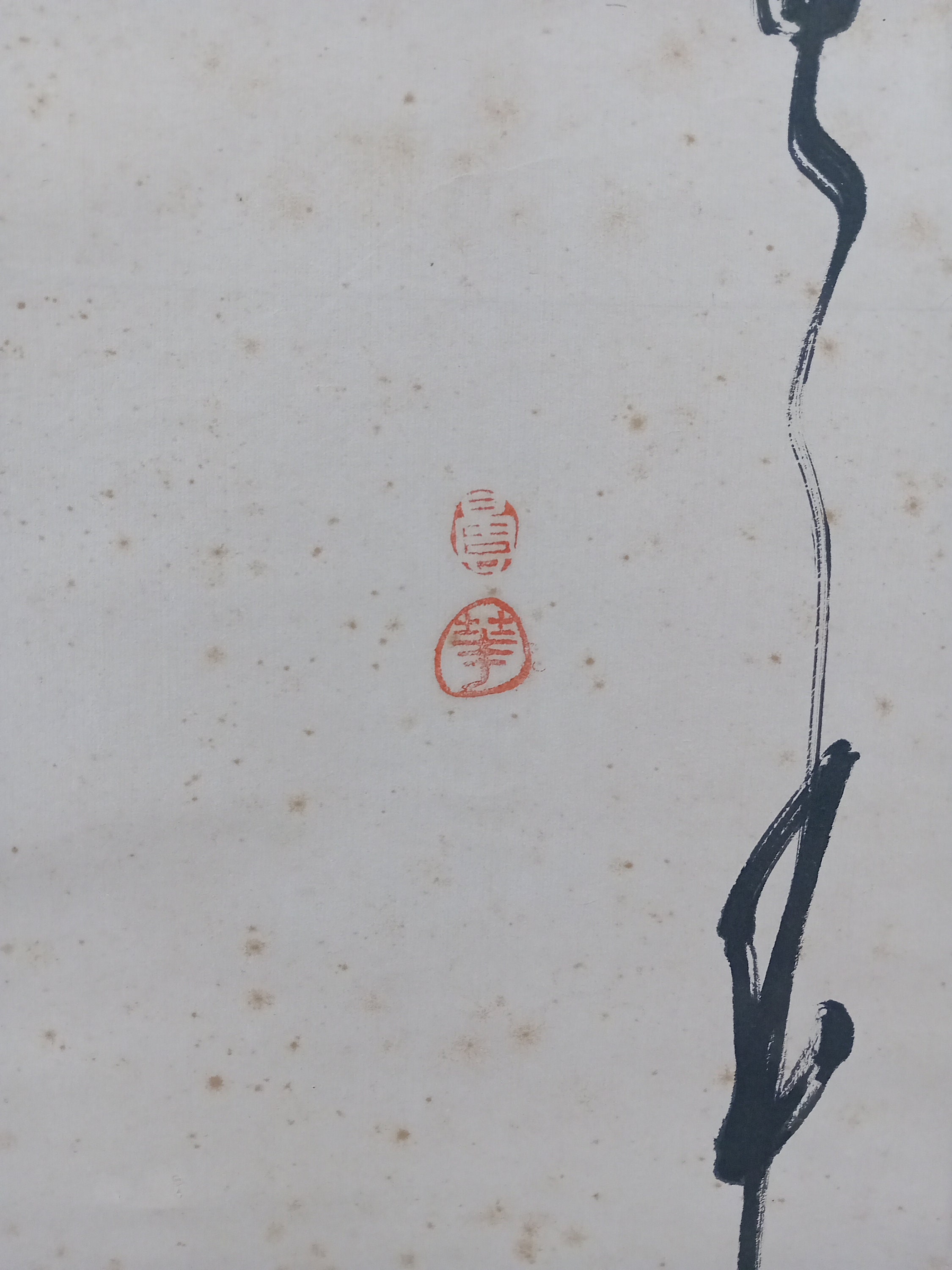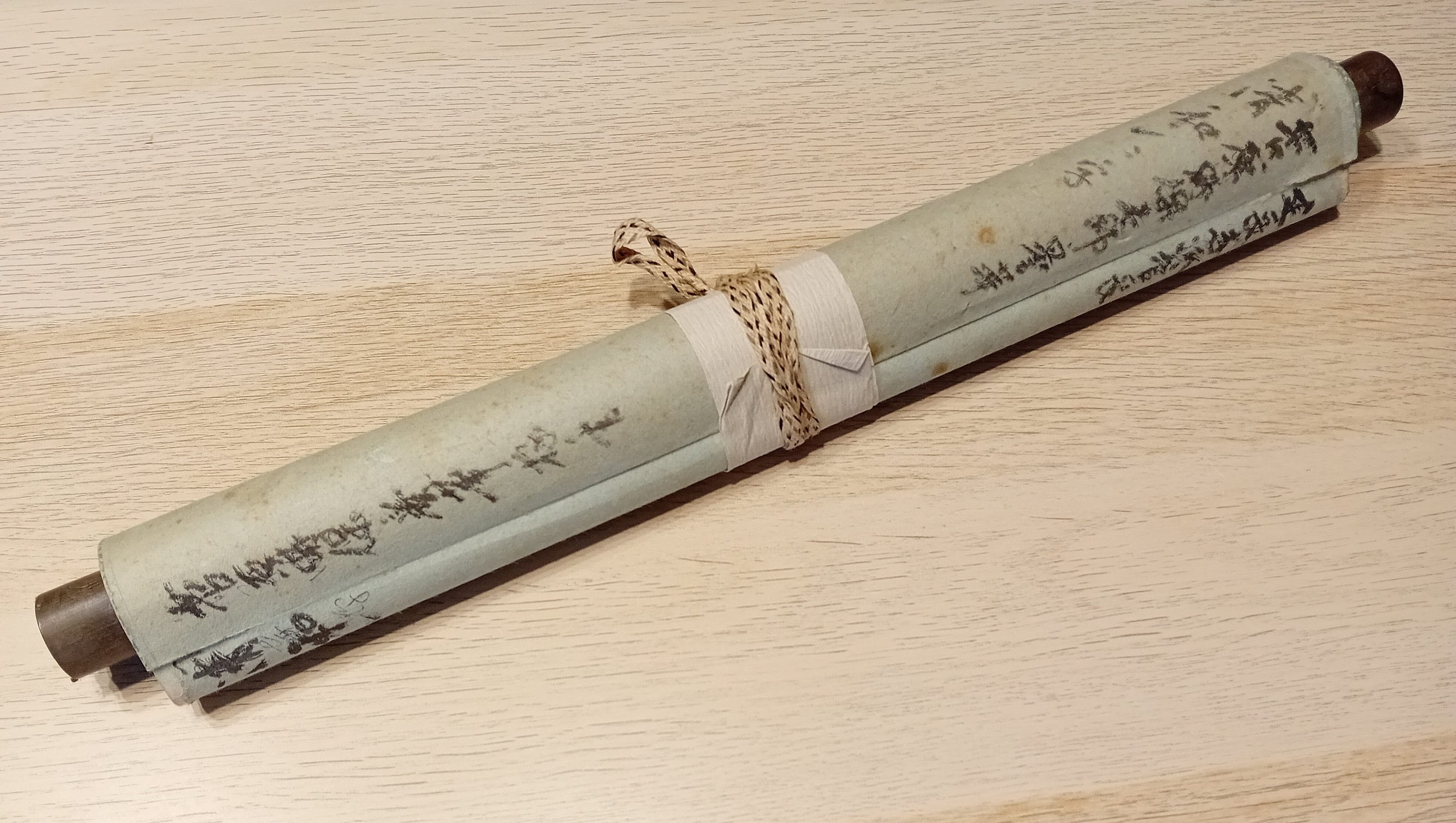Life and Death – Pure Wind (生死清風) — Original Zen Calligraphy Scroll by Fuzan (芙山), disciple of Myōtoku Rōshi, Showa Japan, #663
$348.67
A profound Japanese Zen calligraphy scroll (kakejiku), inscribed with the phrase 「生死清風」– “Life and Death, Pure Wind.”
Executed in expressive black ink on handmade washi paper by the Zen monk and calligrapher Fuzan (芙山), a disciple of Myōtoku Rōshi (妙徳老師).
The composition embodies the timeless Zen view of impermanence: that life and death are inseparable, both moving like a clear wind through existence.
This calligraphy is written in semi-cursive (gyōsho) style with confident brushstrokes and visible ink texture (kasure). The artist’s two red seals — 華水 (Kasui) and 山芙 (Fuzan) — accompany his signature. These paired seals confirm a traditional Zen identity: one spiritual name (hōgō) and one mountain name (sangō), a system typical of postwar Sōtō and Rinzai monks.
Mounted in elegant green and ochre silk brocade, the scroll’s design and materials date to the Showa period (ca. 1950–1970).
The back of the scroll bears an original temple inscription (軸先墨書):
「生死清風之書 禅宗妙徳老師筆 署芙山」
“Calligraphy ‘Life and Death – Pure Wind,’ written by Zen master Myōtoku Rōshi, signed by Fuzan.”
This confirms both authorship and the spiritual lineage of the piece.
Such Zen scrolls were traditionally displayed in meditation halls or private tearooms, serving as silent teachings. The phrase “Life and Death – Pure Wind” is among the most subtle in Zen literature — it invites the viewer to see existence as one continuous breath, unbound by fear or attachment.
Details
• Medium: Ink (sumi) on washi paper
• Mounting: Green and ochre silk with gold weave
• Dimensions: approx. 121 × 33 cm
• Signature & Seals: 芙山 (Fuzan); red seals 華水 / 山芙
• Period: Showa era (1950–1970s)
• Origin: Japan
• Condition: Very good; light age toning and minor storage marks.
• Inscription on roller: identifies Myōtoku Rōshi and Fuzan, confirming Zen origin.
Provenance & Context
This scroll likely originated from a Sōtō Zen temple, where calligraphies by monks were gifted to disciples or patrons. The structure of inscription and seal use precisely follows monastic practice of the mid-20th century. Similar works appear in exhibitions of Gendai Zenshō (Contemporary Zen Calligraphy) from the 1960s–70s.
Artistic significance
The calligraphy’s rhythm — open and airy — echoes the teaching itself: that life and death are transparent movements of the same wind.
The phrase shōji seifū (生死清風) embodies the ideal of 無心 (mushin, “no-mind”), a state free of duality. Fuzan’s brush expresses this serenity with powerful simplicity.
Collector’s note
Authentic Zen calligraphy scrolls with lineage inscriptions are increasingly scarce outside Japan. This work, retaining both its seals and original mounting, is a genuine meditative object — not a reproduction. Suitable for collectors of Buddhist art, interior designers creating wabi-sabi spaces, or practitioners seeking authentic temple calligraphy.
Shipping
Safe and tracked shipping from Latvia.
Shipping from Latvia
Processing time
1-3 business days
Customs and import taxes
Buyers are responsible for any customs and import taxes that may apply. I'm not responsible for delays due to customs.
Payment Options
Returns & Exchanges
I don't accept returns, exchanges, or cancellations
But please contact me if you have any problems with your order.

